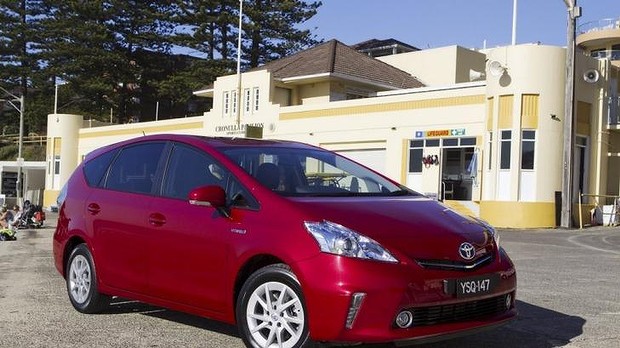June, 16, 2014

Toyota is developing a radical hybrid energy storage system for its next-generation Prius
Toyota is working on transferring its Le Mans electric motor technology to further improve the fuel efficiency of its pioneering Prius hybrid.
The Japanese brand has confirmed that it is using the gruelling 24-hour sportscar endurance race to explore the benefits of high-density supercapicitors for future road car applications.
Toyota has taken a unique path in the new hybrid-based Le Mans regulations with its 2014 pole-winning TS040 prototype powered by a naturally-aspirated V8 engine and supported by two supercapicitors to store energy and drive the electric motors, whereas rival teams, Audi and Porsche, have chosen alternative routes with a diesel engine and electro-mechanical flywheel system and a turbo charged smaller engine with conventional lithium-ion batteries respectively.
Toyota Motor Sport team principal, Yoshiaki Kinoshita, told Drive the Japanese car maker is using the Le Mans race to look at ways of incorporating supercapicitors into production cars in the future, suggesting the next-generation Prius could introduce an integrated hybrid storage system with a combination of both a supercapicitor and battery pack.
“One of the big points of the hybrid system is quick energy recovery for big braking on the motorways,” Kinoshita told Drive on the eve of the 2014 race.
“With this [system we use on the race car], it is 60 times better under braking than in a Prius. If we can bring some of this technology into the Prius then the Prius will be even better for energy.
“I think in the future, we will have a kind of hybrid battery system [developed from our racing program].”
Supercapicitors have the ability to disperse and store large amounts of energy quicker than conventional batteries and provide short bursts of power to the electric motors. The latest Mazda6 is the first production car to adopt such a system, but it is only used to provide power to the vehicle’s ancillary systems such as the air conditioning, power steering and headlights to reduce load on the engine and therefore decrease fuel consumption.
Toyota’s proposed solution would allow the supercapicitors to provide short bursts of energy to the electric motor under initial acceleration and conserve the battery power for constant-speed cruising which requires less energy.
Kinoshita was reluctant to confirm how soon the technology would make it into a production car, but said “I cannot tell the exact timing, but maybe in the next five years.”
Drive
Video Story